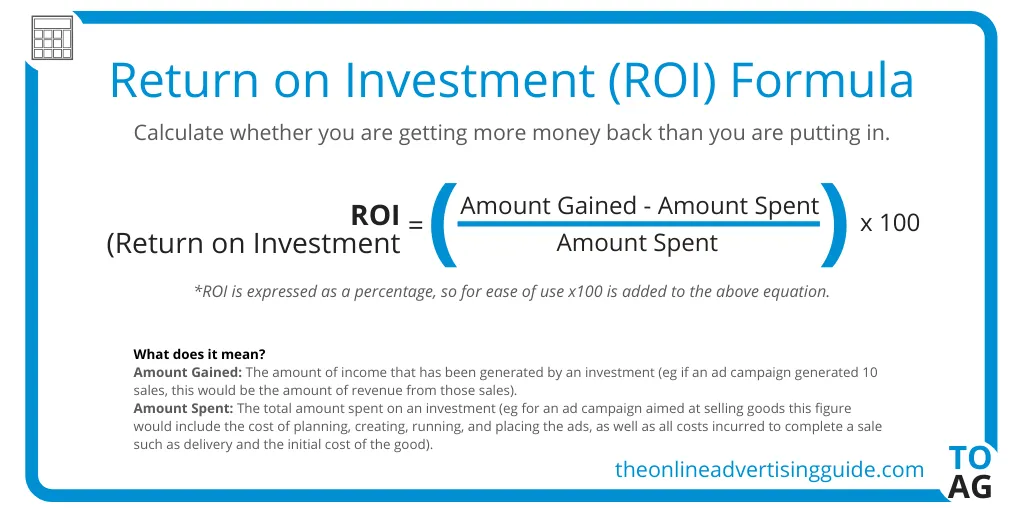Measuring Marketing ROI in A Meaningful Way
Imagine setting out on a treasure hunt, but instead of searching for chests of gold, you are on a quest to validate your marketing expenditures. That’s what measuring marketing ROI (return on investment) is all about — ensuring that the money you pour into marketing efforts is not just creating a buzz but ringing the cash register too. But, how can you track this elusive treasure in a way that truly reflects the success of your campaigns?
Understanding Marketing ROI
ROI in marketing measures the profitability of your investments in advertising, sales promotions, and new marketing channels. It tells you if you’re getting bang for your buck or if your resources are just dissipating in the vast marketplace without a trace. Think of it as the financial compass that guides your marketing strategy.
But here’s the catch: calculating marketing ROI is not just about the raw numbers; it’s about the pertinence and precision of those numbers. Not all that glitters is gold — some of your “profits” may actually be fool’s gold if not measured correctly.
KISS: Keep It Super Simple
The best way to measure marketing ROI is to keep the process simple, but significant. A straightforward approach ensures clarity and avoids the confusion that can come with complex formulas. Here’s the basic formula for calculating marketing ROI:
Marketing ROI = (Incremental Financial Value Gained from Marketing Efforts – Cost of Marketing Efforts) / Cost of Marketing Efforts x 100
To unpack this a bit, the Incremental Financial Value is the additional revenue generated by your marketing efforts. Subtract from this the actual cost of executing the marketing campaigns, then divide that number by the campaign costs and multiply by 100 to get your percentage-based ROI.
Identifying Important Metrics
A meaningful ROI is not about a one-size-fits-all formula; it’s about identifying the metrics that genuinely matter to your business. These key performance indicators (KPIs) might include:
- Cost Per Lead: How much do you spend to acquire a prospective customer?
- Customer Lifetime Value (CLV): How much revenue can you expect from an average customer over their relationship with your company?
- Conversion Rates: What percentage of leads actually turn into customers?
- Customer Acquisition Cost (CAC): How much does it cost you, on average, to gain one new customer?
Diving into these numbers can help you tailor your ROI analysis to reflect what truly impacts your bottom line.
Mapping the Customer Journey
Every customer follows a path from first hearing about your brand to finally making a purchase — this is the customer journey. To measure marketing ROI effectively, you need to trace this journey meticulously.
Attribution modeling is crucial here. Was it the initial ad on social media that clinched the deal, or the follow-up email marketing campaign? Assigning credit to the right touchpoint can give you valuable insights into which channels deserve more of your investment and which ones need reevaluation.
Embracing A/B Testing
Data is invaluable, but understanding which data to trust can be a minefield. Enter A/B testing, a method of comparing two versions of a webpage, email, or ad to see which one performs better. This can inform your ROI measurement by concretely demonstrating which marketing tactics work best for your audience.
Considering Intangible Benefits
Some benefits of marketing initiatives are harder to quantify but no less important. For instance, a campaign may not have generated immediate sales but significantly boosted brand awareness or improved customer sentiment.
In these cases, alternative measures such as social listening tools can provide insights into how your marketing efforts are affecting brand perception and engagement, which can ultimately influence future sales.
Adjusting for Time Lag
Marketing ROI does not always manifest immediately. Especially for big-ticket items or services with longer sales cycles, there can be a significant time lag between marketing exposure and purchase. Therefore, it’s essential to adjust your ROI calculations to account for this delay, ensuring you give your campaigns the time they need to truly demonstrate their revenue-generating value.
Using Technology to Your Advantage
Advanced analytics tools and marketing software can streamline the ROI measurement process, making it easier to analyze large datasets and generate actionable insights. Investing in good marketing technology, or Martech, can spare you from the headaches of manual calculations and provide a clearer path to understanding your marketing efficacy.
Continuously Refining Your Approach
Measuring marketing ROI is not a one-time task — it’s a continuous process. Consumer behavior shifts, market conditions change, and your marketing strategies need to adapt accordingly.
Regularly revisit your ROI calculations, test new hypotheses, and stay flexible in your marketing approaches. The most meaningful way to measure marketing ROI is to approach it as an iterative process, always seeking better ways to align your marketing initiatives with your financial goals.
Conclusion

In essence, measuring marketing ROI meaningfully hinges on a balance between simplicity and depth. It’s about ensuring you’re not just chasing vanity metrics but rather pursuing those insights that showcase how marketing efforts translate into solid business outcomes.
Remember to strike a balance between short-term gains and long-term growth, between what you can easily measure and what you intuitively believe about your brand’s progress. By keeping your ROI analysis rooted in relevance, simplicity, and strategic clarity — you’ll navigate to the true treasure of insightful, actionable, and profitable marketing intelligence.


